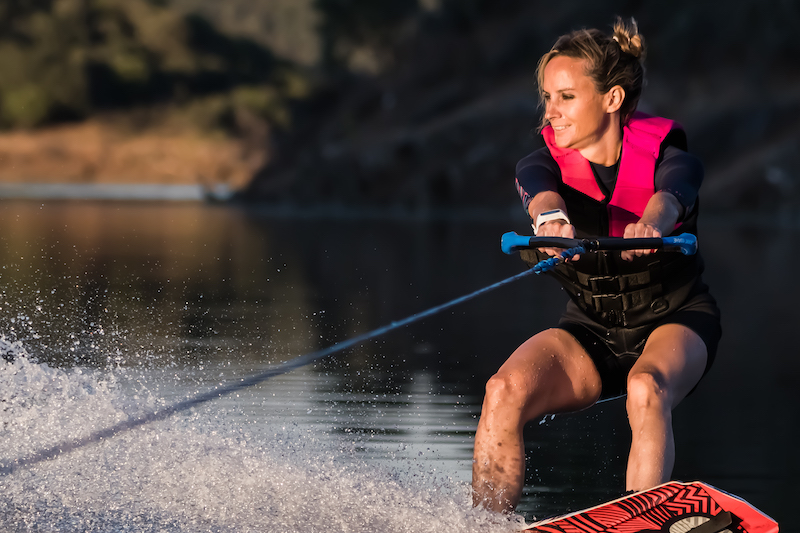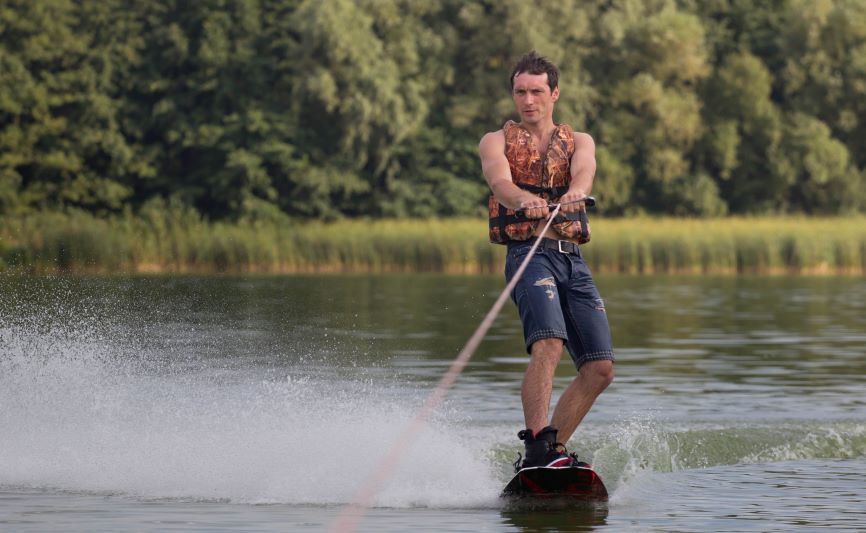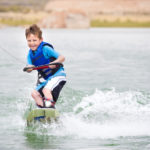Getting up on Wakeboard - How to Get Up and Stay Up
Whenever you start to do something for the first time it can be intimidating, and wakeboarding certainly falls into that category. While it may look effortless, it can take some practice and trial and error to get it right at first. Getting up on a wakeboard is tricky, but with a little know-how and some helpful tips you’ll be able to do it effortlessly in no time.
If you’re wondering how to get up on a wakeboard and are worried about staying upright and not faceplanting every time, read on for just those tips and tricks you’ll need to be successful at getting up on a wakeboard. With our tips on how to get up on a wakeboard you’ll be a pro in no time and enjoying your time out on the water.
Have the correct gear
To be successful at wakeboarding you need to have the correct gear before you even hit the water. This includes what you wear as well as the equipment you’ll need. You’ll need a swimsuit that’s supportive and comfortable and won’t fall off easily. If you wish, you can wear a wetsuit or a rashguard. This is a good option if the water is on the colder side, and it will help protect you against falls.
Your most important personal gear is your life jacket. Don’t go out on the water without one! Life jackets give you some protection if you fall and keep you afloat. Choose a life jacket that fits your size and weight.
Finally, make sure you have the correct wakeboard for your size to aid in getting up on a wakeboard smoothly. Having the correct size will ensure a smoother start and help you avoid accidents. Read our article on choosing the best wakeboard for beginners.
Choose your stance
What kind of stance you have is important for getting up on a wakeboard, as this is the foundation of all the skills you will learn on your wakeboard. You will want to choose whichever is most comfortable for you.
There are two types of stances: regular and goofy. When you stand on your board you will be sideways, with one foot in front and one in the rear. The rear foot is your dominant one, and helps to control the wakeboard. Riders who find having their left foot in front more comfortable are called “regular”, while those who prefer their right foot in front are called “goofy”.

Know how to position your body
Knowing how to position your body is crucial to getting up on a wakeboard. Without this knowledge you’ll find yourself having a harder time, and falling more often.
Lie on your back in the water with your knees bent up to your chest. Your board is attached to your feet and floating near the surface of the water. Hold onto the tow rope with your palms face down towards the water, and your arms straight and relaxed, on the outside of your knees. Make sure to keep your arms straight while being pulled up, otherwise you will fall off your board. I like to keep them straight and strong but leave a little flex in the elbows, don’t have the elbows locked in.
As you’re being pulled up, keep your knees bent and put pressure on your heels rather than your toes to keep a steady level in the water. Once you’re up, keep your knees slightly bent the whole time you’re riding to maintain better control.
How to stand up on a wakeboard
Check your feet
Before you start getting up on a wakeboard, check your feet to make sure your bindings are comfortable and firm on your feet. If they’re too loose you won’t be able to maintain your balance, and if they’re too tight your feet will hurt the entire time.
Start slow
Make sure the driver of the boat starts out slow and maintains a consistent speed. This will help you get up. A good speed to start is 18-20 mph.
Get in position
As mentioned before, float on your back with your knees pulled up to your chest, and your arms on the outside of your knees. Your board should be at a 90-degree angle to the water’s surface, and the bottom of your board should be facing the back of the boat.
Let the boat do the work
As the boat starts moving, don’t fight it. Getting up on a wakeboard is pretty easy if you remember that the boat is doing most of the work. Relax your arms and body and let the boat pull you up as it accelerates. Don’t try to pull backwards. Keep your arms straight until you’ve popped up on the surface of the water.
Stand up slowly
Once you feel your body over the top of your board, start to stand up. Use your leg muscles to stand up, pushing from your thighs and lean back slightly as you stand. Do it slowly, otherwise you may fall.
Best foot forward
Make sure your dominant foot is at the rear of the board, as discussed earlier. Point your leading hip towards the tow rope. Distribute your weight evenly with slightly more pressure on your dominant (rear) foot, and keep your head up and eyes looking straight ahead.

Compare the best wakeboard brands
Discover how the wakeboarding brands are different and which one may be right for you
Practice makes perfect
If you’ve been wondering how do you get up on a wakeboard as smoothly as the more experienced riders do, the answer lies in following the instructions above. We have to add one more tip, though: practice! Even if you don’t get it right the first, the fifth time or the fifteenth time, don’t give up.
It can be tiring on your body when you are learning to get up, so start with short sessions. If you don’t get up after a few attempts, take a break, and come back to it later. Keep on trying and eventually you will master getting up on a wakeboard. With a little practice you’ll soon be looking just like those pros that glide up on the water like they don’t weigh anything. And most of all, keep a positive attitude and have fun!

